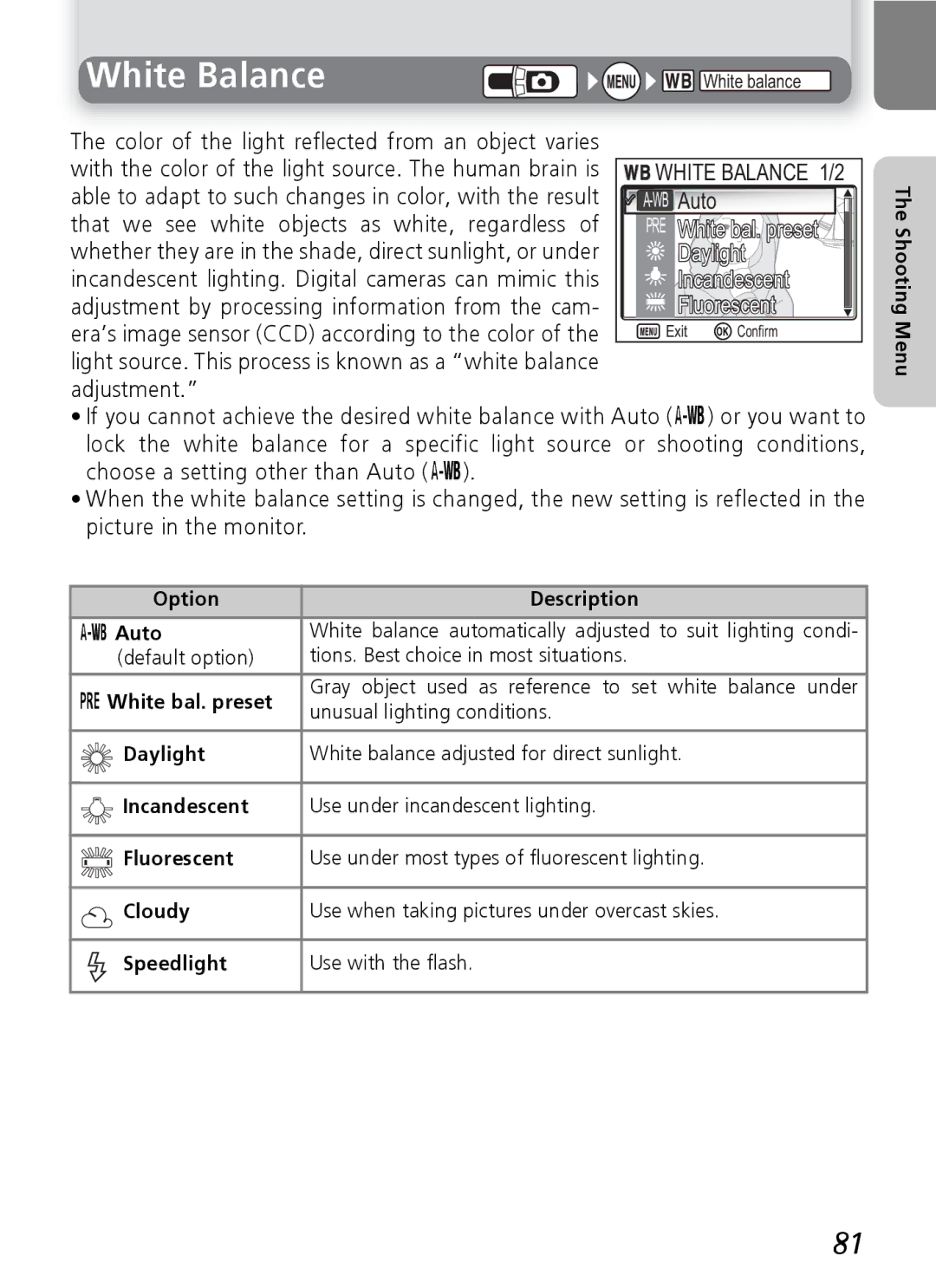
White Balance |
|
| White balance |
The color of the light reflected from an object varies |
|
|
|
with the color of the light source. The human brain is | WHITE BALANCE 1/2 | ||
able to adapt to such changes in color, with the result | Auto | ||
that we see white objects as white, regardless of | PRE | White bal. preset | |
whether they are in the shade, direct sunlight, or under |
| Daylight | |
incandescent lighting. Digital cameras can mimic this |
| Incandescent | |
adjustment by processing information from the cam- |
| Fluorescent | |
era’s image sensor (CCD) according to the color of the | Exit | Confirm | |
light source. This process is known as a “white balance |
|
|
|
adjustment.” |
|
|
|
•If you cannot achieve the desired white balance with Auto (M) or you want to lock the white balance for a specific light source or shooting conditions, choose a setting other than Auto (M).
•When the white balance setting is changed, the new setting is reflected in the picture in the monitor.
Option | Description | |
M Auto | White balance automatically adjusted to suit lighting condi- | |
(default option) | tions. Best choice in most situations. | |
n White bal. preset | Gray object used as reference to set white balance under | |
unusual lighting conditions. | ||
| ||
Daylight | White balance adjusted for direct sunlight. | |
Incandescent | Use under incandescent lighting. | |
Fluorescent | Use under most types of fluorescent lighting. | |
Cloudy | Use when taking pictures under overcast skies. | |
Speedlight | Use with the flash. |
The Shooting Menu
81
